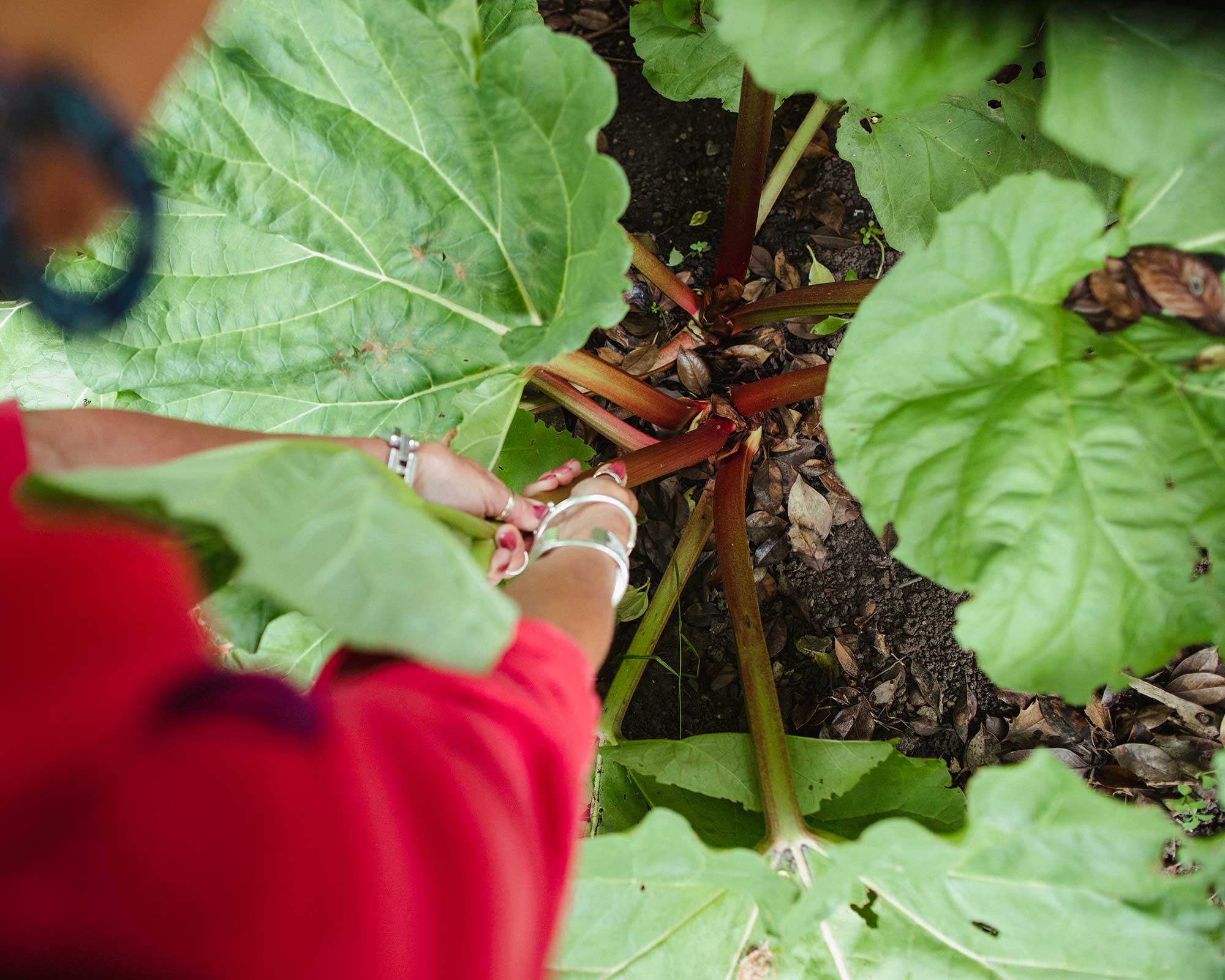How and when to harvest rhubarb for tasty stems
We explain when to harvest rhubarb and how to do it properly for the best results


Wondering how and when to harvest rhubarb? This perennial is a great veg-patch addition for gardeners of all levels of experience. The long, thick stems are delicious stewed with a sprinkling of sugar and a spoonful of ice cream, or baked into crumbles or cakes.
Growing rhubarb is straightforward. But, when it comes to picking it, there's the right way to do it and the wrong way. The latter doesn't just have detrimental effects on the taste – it can also affect the health of the remaining plant. Our guide explains, so you can enjoy this tasty treat for years to come.
When to harvest rhubarb
Harvesting vegetables and fruit properly is always key for the best results, and rhubarb is no exception.
Rhubarb is usually ready from late spring to early summer – although it can be sooner in the year if you've used forcing pots and early varieties.
Note that pinkness of the stems doesn't always indicate ripeness. In fact, green stems are safe to eat, according to John Negus, an expert from Amateur Gardening. They may just need a bit more sugar when you cook them. The cause is usually warm, dry weather, although some varieties are simply greener by nature.
So, rather than going by color, detect ripeness by looking at the stalks. These should be thick and around 12in long or more, with leaves that are fully open at the top.

In the first two years after planting, it's important not to over-pick the stems to avoid rhubarb growing problems. In the first year, refrain from picking at all, and pick only a few stems the second year.
Also, it is best not to harvest rhubarb after mid-summer, adds John. In an article for The Express, gardening guru Monty Don agrees, saying to let the plants grow and for the leaves to get really big after this point in the year. 'All that goodness that they take through photosynthesis will feed back into the roots and ensure a good harvest the following year,' he explains.

How to harvest rhubarb
Harvesting rhubarb is very easy. All you need to do is hold the stem near the base with your hands, and gently twist and pull. It should break away from the rest of the plant cleanly. You definitely don't need your best secateurs for this task.
The RHS advises not to take more than a third of a plant's stems at once, to keep it in a state of active growth.
Bear in mind that the leaves, which contain high levels of oxalic acid, are toxic and should never be eaten, John warns. So, be sure to cut them off and discard them, then wash the stems before you start cooking. According to Rhubarb Central, you can add the leaves to your compost heap, although you may want to shred them up a bit first to speed up the decomposition process.

Can you still harvest rhubarb once it has flowered?
Dry, hot weather can encourage rhubarb plants to flower. Although they look quite pretty, it is best to cut entire flower stalks off if they appear and discard them (don't eat them). This will help the plant reserve its energy and use it to grow more edible, foliage stems instead.
You can still continue to eat the usual rhubarb leaf stems after this, but as mentioned above, stop harvesting around mid-summer.

The garden was always a big part of Holly's life growing up, as was the surrounding New Forest where she lived. Her appreciation for the great outdoors has only grown since then. She's been an allotment keeper, a professional gardener, and a botanical illustrator – plants are her passion.
